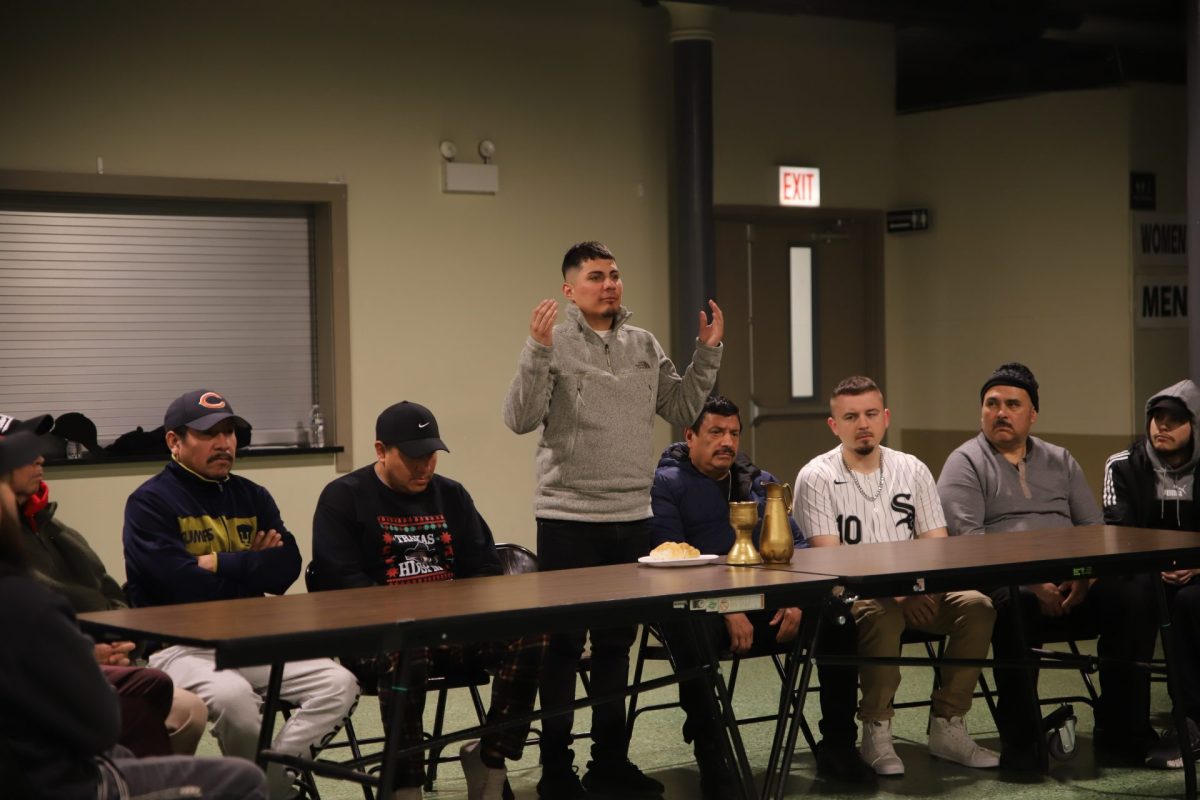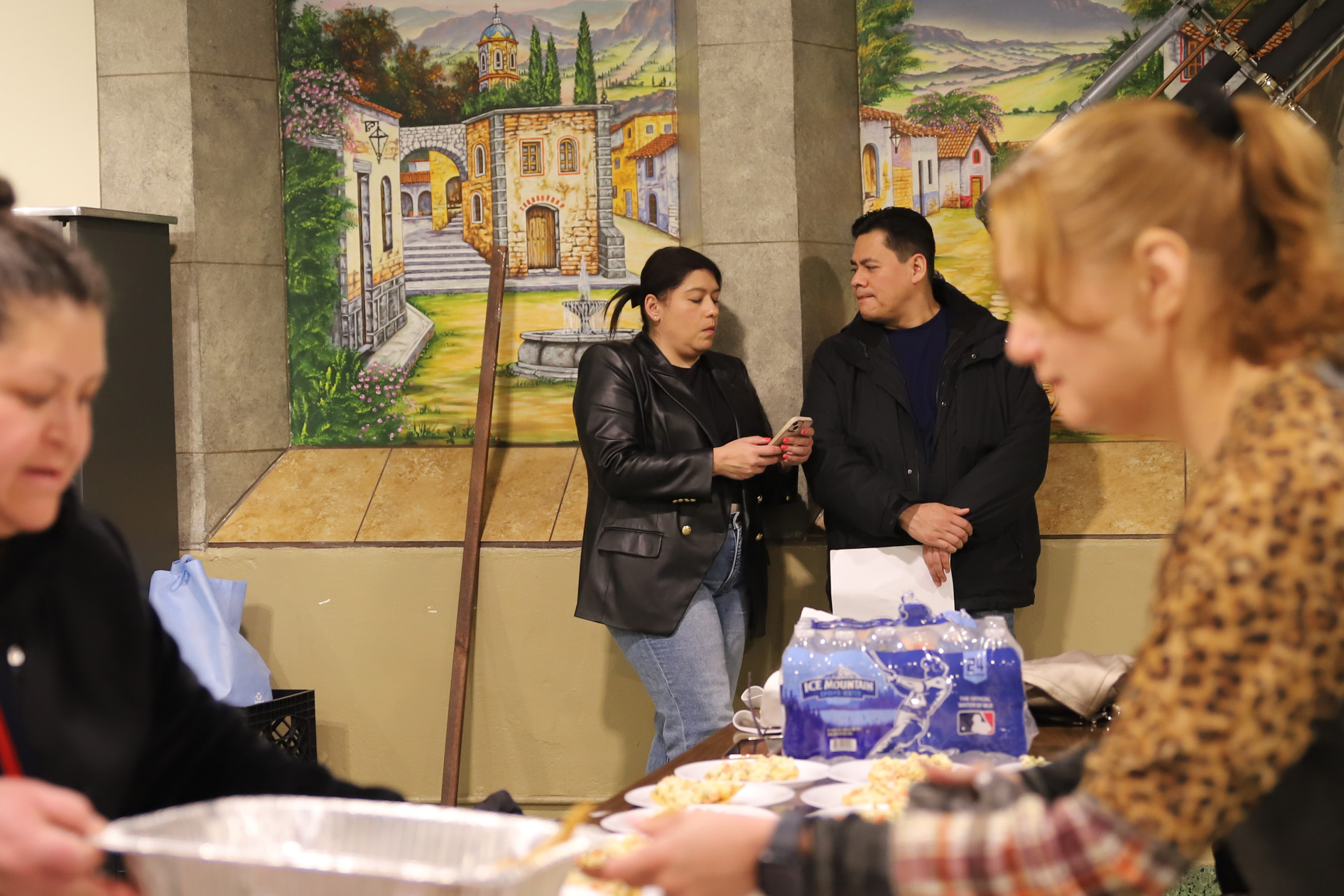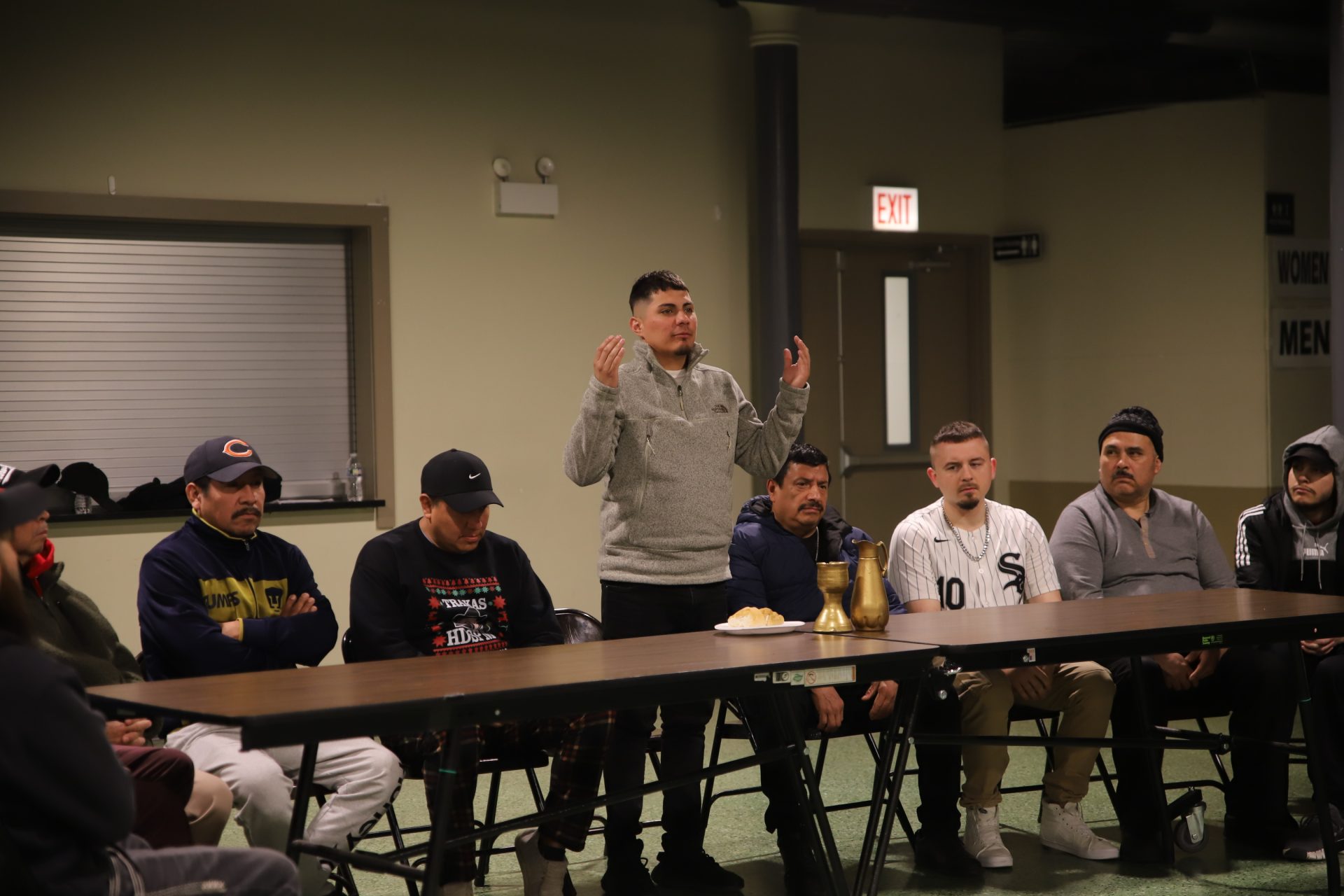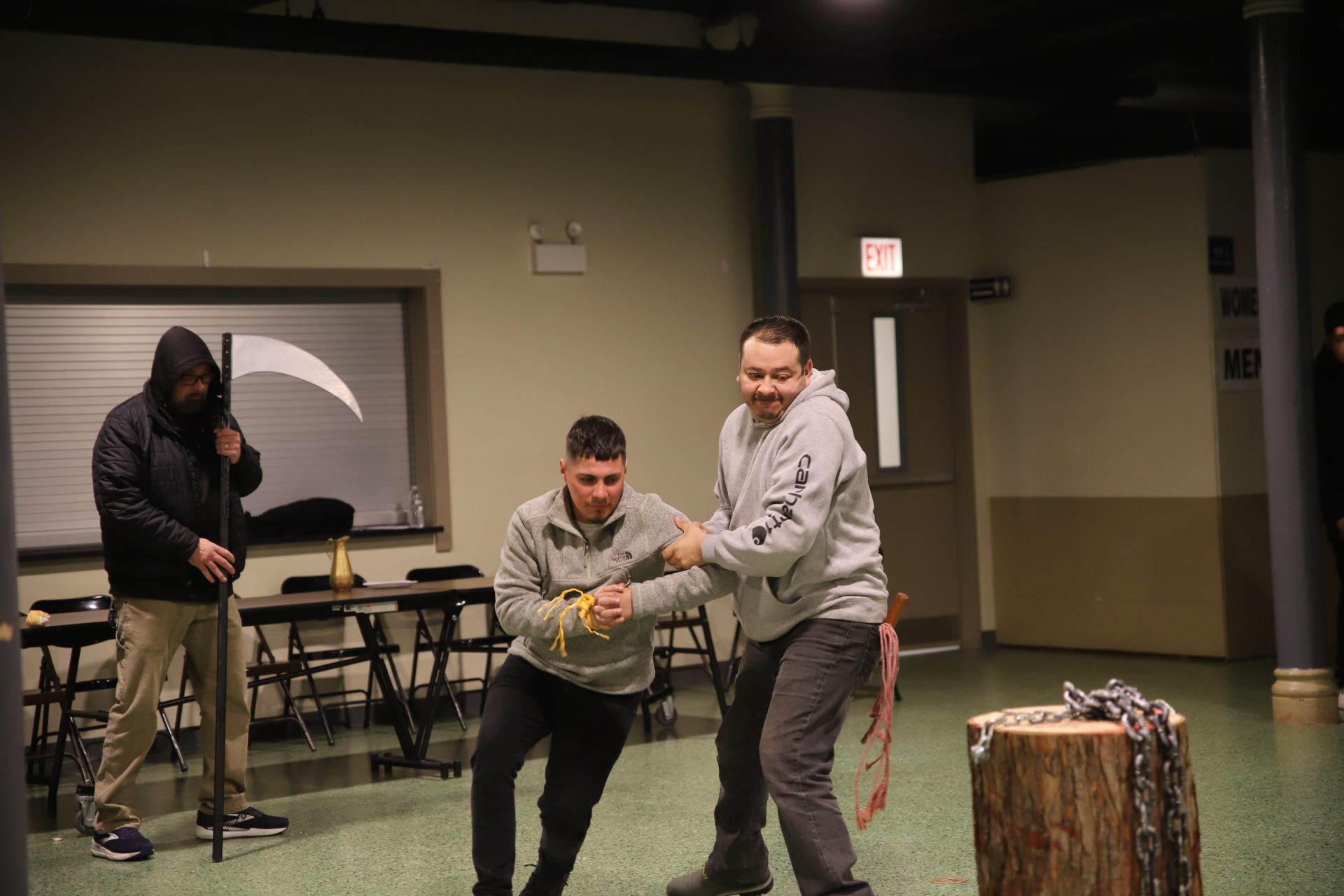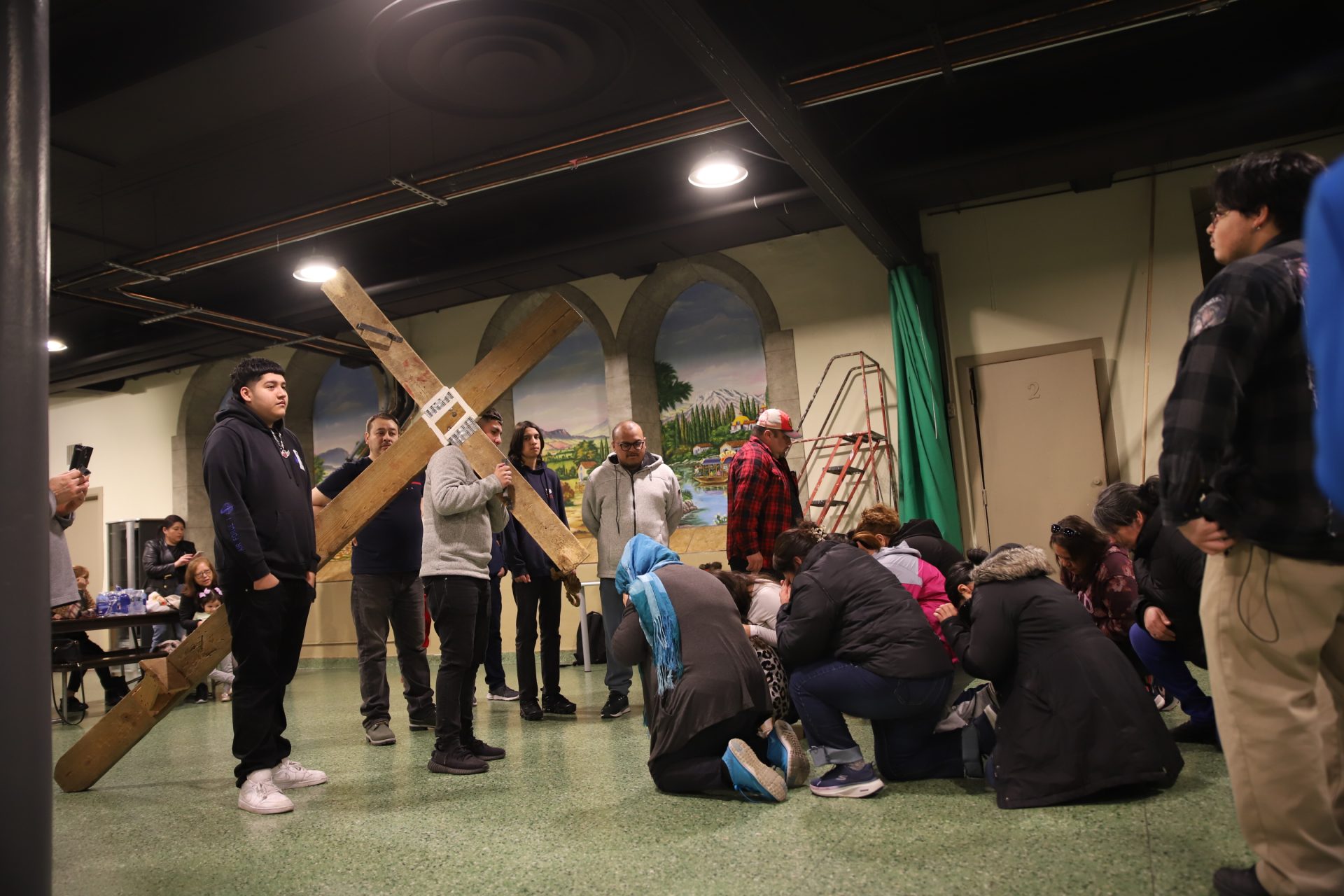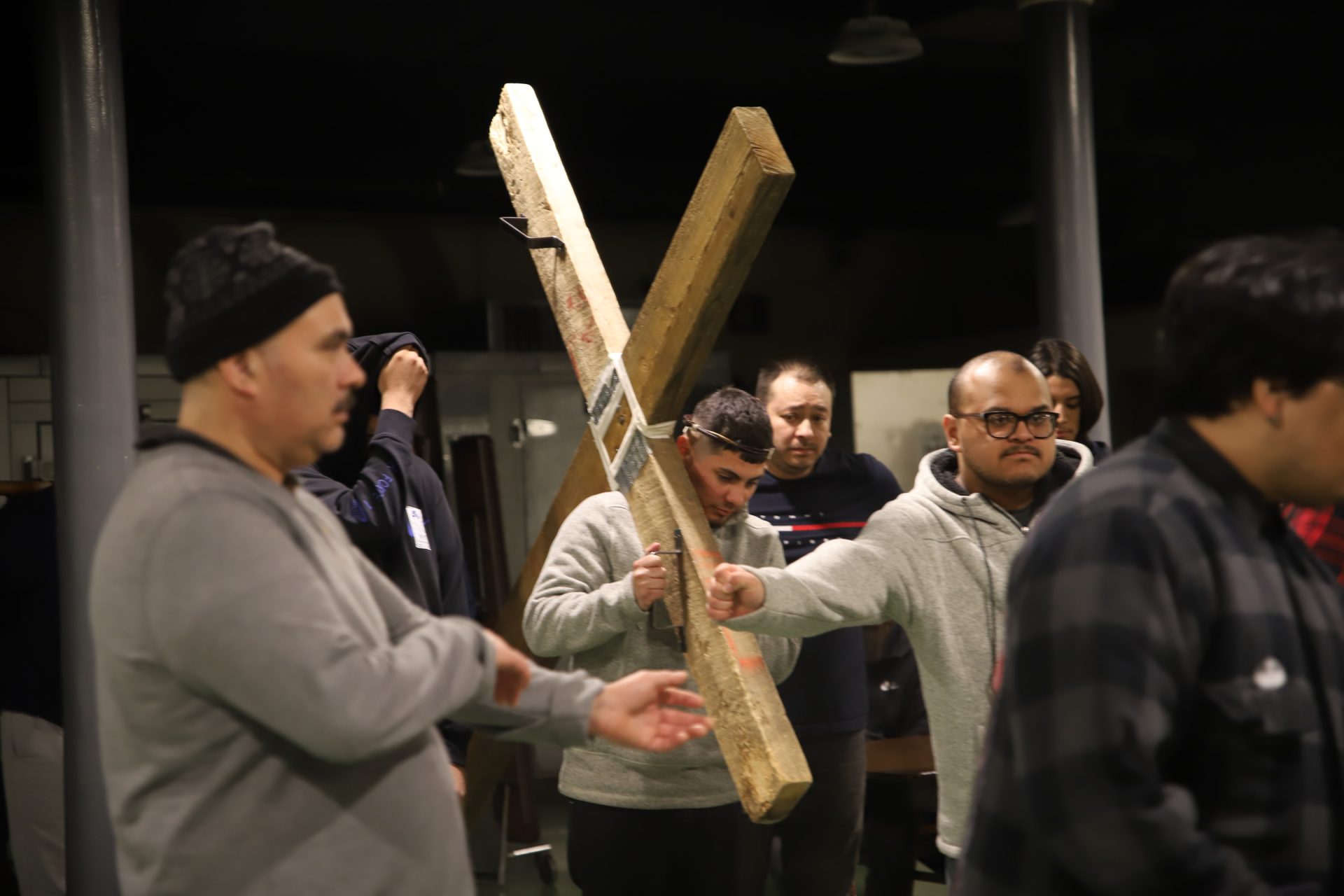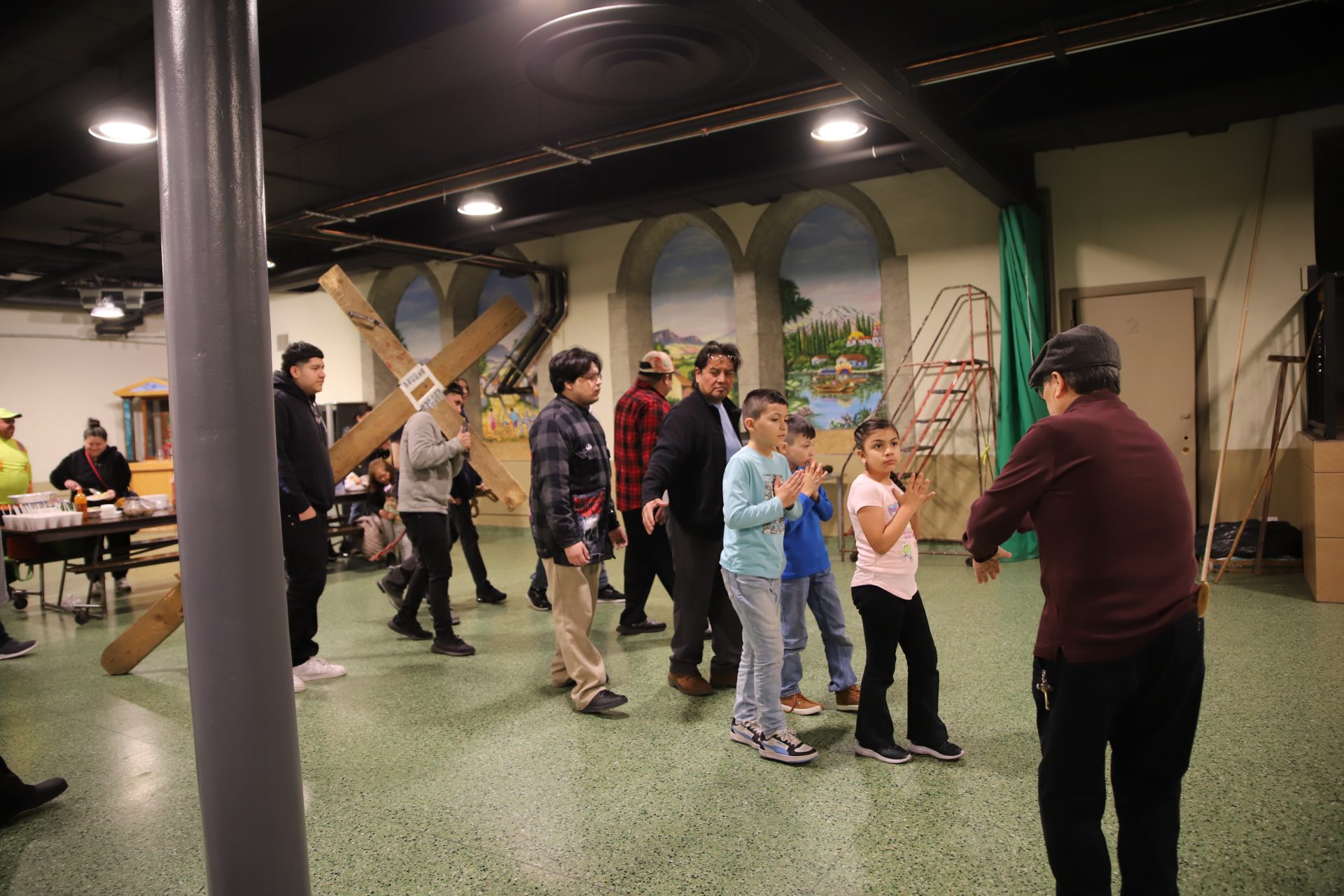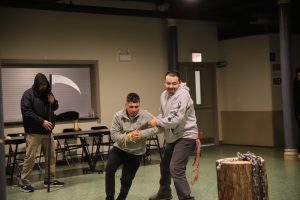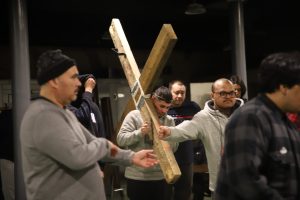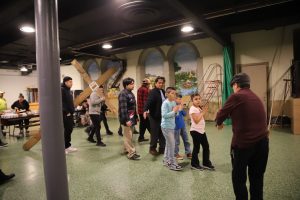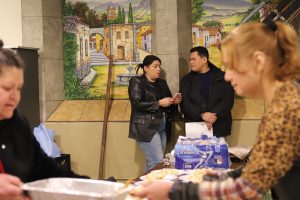In the basement of St. Pius Church, in the Pilsen neighborhood, people set up a table with 13 chairs. The designated seaters shuffle in, carrying a goblet and a plate of bread. A few people stand outside the pillars acting as stage boundaries, running their lines and learning how to work the props. As the bustling slowly quiets, a narrator’s voice rings, introducing The Last Supper in Spanish.
This year, Good Friday lands on April 18, which is when community members in Pilsen will set up a reenactment of the final moments of Jesus Christ’s life known as the Pilsen Via Crucis. Community members have done this for 48 years. They will don robes, armor and era-appropriate footwear while leading a procession down 18th Street, carrying a huge cross towards St. Pius Church.
Featuring some of the main events in the gospel, this reenactment is one of the biggest events of the year for Nellie Quintana, the lead coordinator of the play. She calls this her Super Bowl.
The team is in its final days of practicing. Since Quintana has been coordinating this event for the past 11 years, she said they are in a “very pressured routine.”
“Right now it’s like, go time,” said Quintana. “It’s getting the press releases out, getting the posters up in the community, talking to the business owners, letting them know we’re gonna shut down the street, talking to the participants, the costumes, the props, making sure that everybody knows their role.”
As a ten-year-old, Quintana joined her mother– also a coordinator–at the Via Crucis practices, seeing how she and others would put up the reenactment.
“I would see the coordinators and what they would do. So then I was like, ‘I want to help. Let me give, let me help, teach me.’ And so they began teaching me,” said Quintana, who is now 46.
When the former director, Jorge Nieto, passed away in 2014, his family requested Quintana shoulder the responsibility of staging the reenactment.
“Having all these years of me and my curiosity…I picked it up and I brought it to what it is today, along with the team of coordinators and along with all the participants,” said Quintana.
The community spirit is what keeps participants coming back, Quintana said. Even though they all go to different churches across Chicago, they come back to participate in the Via Crucis, or the Way of the Cross, every year.
“We are a church…the true church is a family, is a community that supports each other,” she said. “We give them that sense of community and that importance that they deserve because without them, the Pilsen Via Crucis wouldn’t be living right now.”
Quintana said some people have been attending the Via Crucis and its practices for a number of years, some coming even before they were born, in their parents’ wombs.
While Isaac Barrera did not join from the womb, he had been a visitor of the Via Crucis since he was ten years old. However, it took him more than 20 years before he finally took part in the procession in 2014.
He played Jesus in only the second year he participated. Now, he serves as the director of the play, saying he was “moved” by the experience of portraying Christ.
“I was just in shock and also kind of a little frustrated, I should say, because where was I all this time? How come I didn’t take the time to do this?” Barrera said.
Now, he serves the reenactment by directing it and helping other men in the community portray Jesus.
Given that they only let people portray Christ once, Barrera sees many different versions of the biblical character. He said he wants to “make the people see that Jesus is in everyone.”
“Everyone has something different, and you get to see yourself as well,” he said. “An older guy has a different perspective of Jesus; a younger guy has a different perspective.”
To Barrera, Jesus can be a “regular guy,” someone everyone can relate to.
Like this year’s Jesus, Eduard “Eddie” Bahena, who works as a public adjuster helping people negotiate their insurance claims. He grew up Catholic and has been attending the Via Crucis for as long as he can remember.
Bahena sees his portrayal of Jesus Christ as a way to serve a “bigger purpose” and to “live life the way Jesus would have wanted” him to.
“I’m a huge community advocate and church advocate as well,” said Bahena. “If I could do something to help somebody or be out there and just assist them in any way possible, I will.”
This is his first year participating in the Via Crucis. While learning the scripts has been nerve-wracking, he said, this has been a “personal journey” for him.
“I do look to become a better person, not just for myself, but everybody else around myself,” Bahena said.
Everyone who plays Jesus has a personal experience in doing so, Quintana said. Some of those who portray him are not even able to define or verbalize their experience.
Others who take part in this reenactment come from neighbourhoods beyond Pilsen, some taking the bus or trains to make it in time for practices, she said.
This will be the 48th year that the Pilsen Via Crucis procession will take place. Quintana said that after every rollercoaster journey of putting up the performance, it ends in a physical and “spiritual relief.”
“On Good Friday, when you see the crowd praying in silence together, makes it all worth it, because we are one community,” said Quintana. “It’s not just Pilsen. It’s beyond the borders of Pilsen.”


